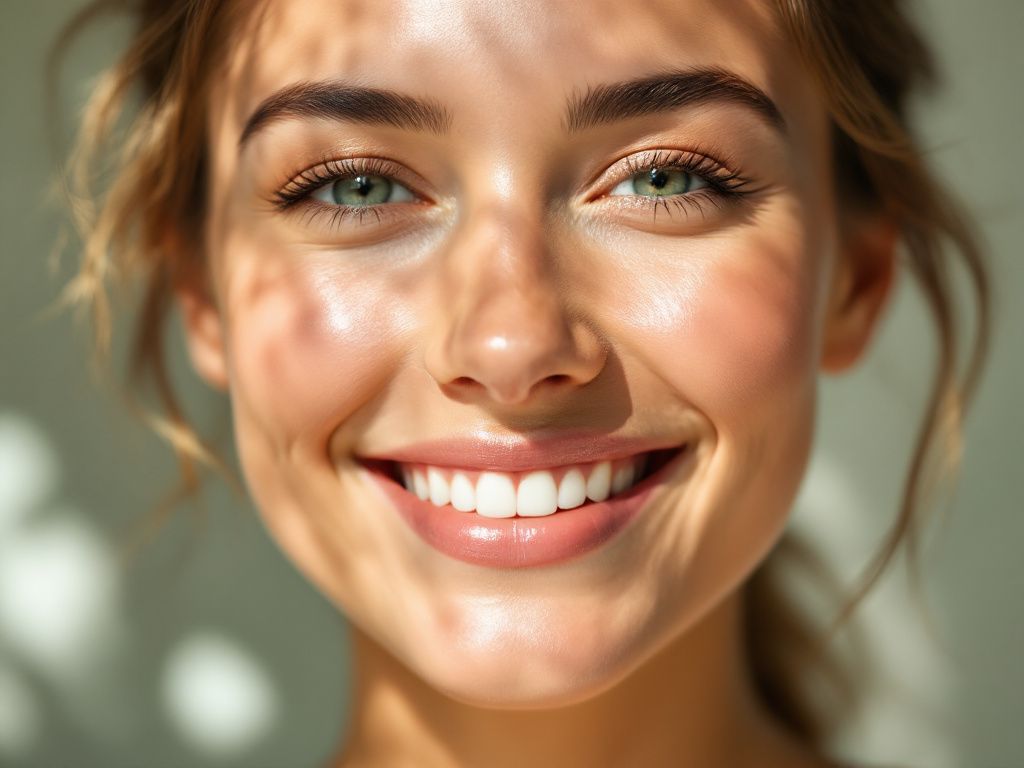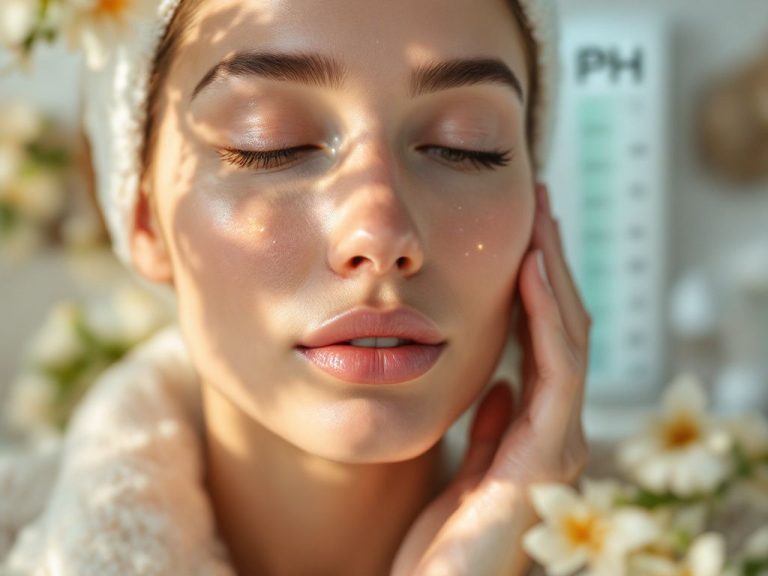Hey there! Let’s have a heart-to-heart about your skin, specifically about those darn breakouts on your cheeks. You’re not alone if you’ve noticed those pesky blemishes popping up, as if on cue, just when you need them the least. It’s more common than you might think, and we’re diving right into the nitty-gritty to help you understand—and hopefully banish—those stubborn cheek breakouts. Ready for some real talk?
Table of Contents
ToggleWhy Are My Cheeks Breaking Out?
First things first, why the cheeks? It’s almost like your face has a mind of its own. This is where facial mapping comes into play. A neat little concept that tells us different areas of the face might hint at different internal health issues. It’s like your skin waving a little flag, trying to get your attention. Cheek breakouts often scream out lifestyle issues but don’t panic— we’ve got a plan for that.
Lifestyle Factors: The Usual Suspects
Let’s chat about the possible culprits:
- Phone Hygiene: Our phones are our lifelines, but they’re not exactly germ-free. Constantly pressing your phone against your cheek is the perfect recipe for bacteria transfer. Next time you’re on a lengthy call, consider using speaker mode or grabbing those comfortable earphones.
- Pillowcase Patrol: Your pillowcase might be a silent, tricky perpetrator. Dirt, oil, dandruff—we’re talking major party time for the bacteria camping out on your fabric sheets. Washing pillowcases once a week (at the very least) can do wonders.
- Diet Dramas: Listen, I’m not suggesting going full-on diet police, but what you eat (or don’t eat) can really influence your skin. A keen eye on sugar and dairy intake might be a revelation, as both are known to spike breakouts for some people.
- Skincare Shenanigans: Not all products love you back. Ingredients like heavy oils might clog pores, leading to breakouts. Take stock of what’s in your beauty arsenal.
The Stress Connection

Stress isn’t just a mental act; it pokes and prods at your skin, prompting the oil glands to work overtime. Learn a few stress-busting relaxations, maybe yoga, or even steal a few minutes here and there for deep-breathing exercises—trust me, your skin will thank you.
Digging Deeper: Internal Causes of Cheek Breakouts
Let’s unravel the inside job your body might be pulling on your skin.
- Hormonal Havoc: Ah, those delightful hormones can completely upheave your complexion. While mostly cheeky in teens, adults aren’t immune. Consider seeing a dermatologist or an endocrinologist if you think this might be your culprit.
- Allergy Alerts: Got that one product in your beauty regimen you think is golden? It could be a guise! Ingredients like fragrances or preservatives can be notoriously sneaky irritants for skin, particularly on cheeks.
- Digestive Blues: Believe it or not, your gut is a game-changer in terms of what’s reflecting on your face—your cheeks included. If you suspect a connection (bloating or discomfort along with cheek breakouts), chatting with your doc about gut health wouldn’t go amiss.
Bust The Breakouts: A Targeted Care Regimen
With all of these factors swirling around, let’s discuss some proactive steps. This, my friend, is simple skincare with a twist.

Step-by-Step Guide
- Clean Slate: Start fresh every morning and evening with a gentle cleanser. No scrubs—that’s crucial to avoid further irritation. Consider a sulfate-free option. Bonus points if it has salicylic acid.
- Toner Time: Use an alcohol-free toner. Witch hazel or rose water are wonderful options to balance pH levels. Say goodbye to excess oil and hello to happy cheeks.
- Moisturize Wisely: Opt for non-comedogenic (fancy talk for non-pore-clogging) moisturizers. Aim for water or gel-based formulas. Jojoba oil is a fantastic, lightweight hydrating option.
- Sun Protection: Seriously, wear sunscreen. UV rays can worsen post-breakout marks and cause dryness—sort of rubs salt in the wound, right?
- 5. **Targeted Treatments: Spot treatments with benzoyl peroxide or tea tree oil can work wonders overnight. Unfortunately, miracles aren’t on the ingredient list, so it requires a little patience.
- 6. **Weekly Rituals: Give a gentle exfoliant a whirl once a week. Exfoliate just enough to slough away dead skin but not so much that your cheeks retaliate.
A Word On Medication
When OTC remedies are playing hard to get, a dermatologist is your best ally. They might suggest topical retinoids, oral antibiotics, or even hormonal treatment options. It’s reassuring to know there’s a backup plan when you need serious firepower.

Preventive Measures: Nipping The Problem
On guard, but not overwhelmed! A few lifestyle turns can make a surprising difference.
- Hands Off: Yep, nostalgic of mom’s “Don’t touch your face!” wisdom rings true. Keep those paws off your face to avoid spreading oil and grime.
- Exercise Enlightenment: Sweat out those toxins with regular workouts. Quick tip: don’t forget to cleanse after.
Let’s Talk Environment
Environmental factors can contribute more than you think. If you live in an area packed with pollution, regularly cleaning away that grime means saving your cheeks. Humid environments can be particularly tricky—the moisture in the air can trap sweat and oils, keeping the door open for breakouts. Considering air conditioning or a fan might refresh the air around you, lending a hand in keeping your skin calm and collected.
Taking Stock: Patch Testing
Ah, the blessing and curse of curiosity. Overhauls are exciting! Just remember to patch-test new products on a small area of skin. No one wants a breakout rollout courtesy of an overzealous experimentation session.
Embrace Real
Remember, breakouts are utterly human. So don’t let them pull you down. Having said that, applying preventive and corrective measures can make a big difference. With a bit of detective work and some gentle tweaks to your routine, you’ll be heading toward e clean skin journey before you know it.
So, onward to clearer cheeks! Revisit these possibilities, create a plan that melds into your lifestyle, and enjoy smoother skin days ahead. Good luck and share your thoughts along the path; we’d absolutely love to hear about your own cheeky journey.
Frequently Asked Questions
What causes breakouts on the cheeks?
Breakouts on the cheeks can be caused by several factors, including oil trapped within pores, allowing acne-causing bacteria to grow and create inflammation. Other causes include hormonal fluctuations, daily habits such as touching your face, resting your face on your hands, using dirty phone devices, infrequent changing of pillowcases, and friction from protective face coverings or makeup brushes[1][3][4).
What types of acne are common on the cheeks?
The cheeks are typically prone to inflammatory acne, including papules, pustules, nodules, and cystic acne. These types of acne are characterized by red, angry, and often painful lesions[1][2][4).
How can I treat breakouts on my cheeks?
Treating breakouts on the cheeks involves a combination of lifestyle changes and skincare treatments. Effective treatments include using salicylic acid and benzoyl peroxide, practicing good skincare routines, and avoiding habits that cause friction or introduce bacteria to the skin. For severe cases, in-office treatments like facials, chemical peels, red or blue light therapy, and lasers such as AviClear may be recommended[1][3][5).
Can breakouts on the cheeks be prevented?
Preventing breakouts on the cheeks involves maintaining good skincare habits, such as regularly cleaning makeup brushes, changing pillowcases frequently, avoiding touching your face, and using skincare products that are suitable for your skin type. Additionally, addressing hormonal imbalances and reducing friction from daily activities can help prevent cheek acne[1][3][4).
References- Cosmopolitan. (2022). Acne on Cheeks 2023: Why You’re Breaking Out and How to Treat It.
- Cleveland Clinic. (2021). Cystic Acne: What Is It, Symptoms, Causes and Treatment.
- Skin Software. (2024). Experiencing Acne On Your Cheeks? Here’s how to Treat it.
- Medical News Today. (n.d.). Acne face map: Causes of breakouts.
- Healthline. (2022). Acne: Treatment, Types, Causes, Prevention, and More.








